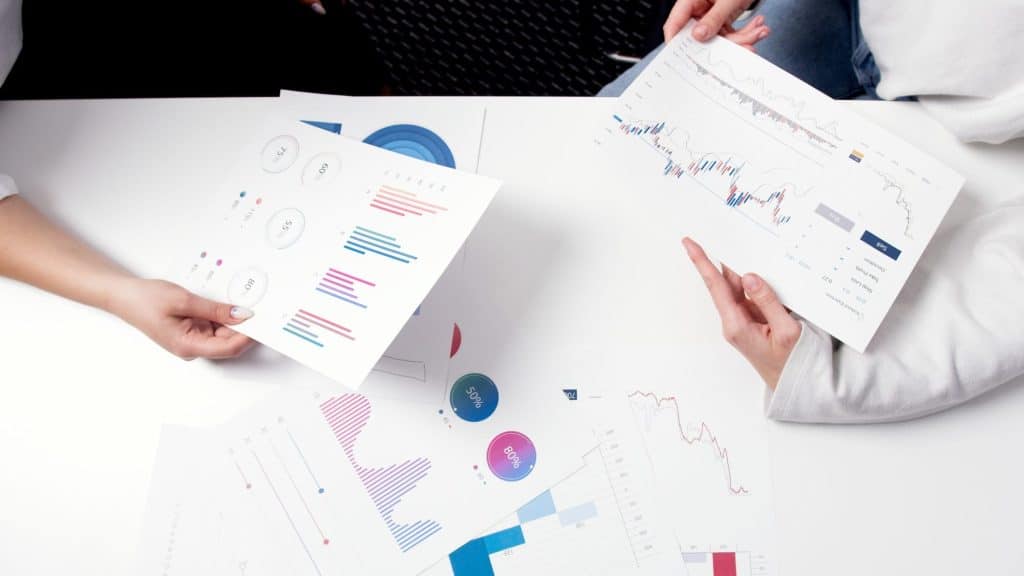Risk management is an essential part of any business and risk profiles are one of the most important tools used in risk management. A risk profile is a description of all the potential risks associated with a particular business and outlines strategies to mitigate those risks. Risk profiles help businesses identify areas where risk exists, assess the probability of risk occurring and its impact on operations, develop strategies to reduce risk, set up processes for monitoring risk levels, evaluate their effectiveness regularly and document these actions for future reference. By having this information readily available in one place, businesses can be better prepared to anticipate and respond quickly should any unforeseen events occur.
What is a risk profile?
A risk profile is an analysis of a company’s particular financial and operational risk exposures, which is used to develop a comprehensive strategy for managing these risks. It typically includes a review of the company’s internal processes, policies and procedures, as well as its external environment. The risk profile can be used to identify potential areas of weakness, threats, and opportunities. Companies use risk profiles to determine what risks they face and how best to manage them.
Risk profiles are essential for helping companies make informed decisions about their operations and budgeting. They allow companies to evaluate the potential risks associated with their investments or projects before making major commitments. By considering the potential risks in advance, companies can avoid costly mistakes or unforeseen issues that might result poor decision-making. Risk profiles also provide insight into the factors that could lead to long-term success or failure in certain areas of business operations.
For example, an accurate risk profile will help a company assess the legitimacy of suppliers or partners before entering into agreements with them. Risk profiles are also commonly employed when determining whether an organisation should diversify its investments or embark on a new venture entirely. This tool allows businesses to plan ahead so they can reduce uncertainty and increase their chances for success over the long run.
How do you develop a risk profile?
To develop a risk profile, a business needs to determine its risk appetite and risk tolerance. How is that done? By:
- Identifying risk areas
- Assessing risk
- Ranking risk
- Developing risk management strategies
Identifying risk areas
Identifying risk areas in your business is the first step in establishing a risk profile. Risk profiles provide a comprehensive overview of all the potential risks associated with a particular business, allowing organisations to assess the probability and impact of a risk materialising. By having this information readily available in one place, businesses can be better prepared to anticipate and respond quickly should any unforeseen events occur.
Identifying risk areas starts by understanding how different parts of the organisation operate. This includes evaluating operational processes such as production lines or customer service protocols, financial decisions such as investments or contracts; legal considerations such as compliance with laws and regulations and technological factors like data security or software updates. Once these areas have been identified, it is crucial to understand each risk, its chances of happening and its potential influence on operations if it does take place. This helps determine which risks are more likely to occur so that appropriate mitigation measures can be put into place.

Assessing risk
Assessing risk is the next step, as it helps organisations detect where risk exists and what its risk rating is.
When assessing risk, organisations should consider both internal and external factors that could affect their operations. Internally, organisations should analyse their financial position and resources, their current technology and systems infrastructure, their personnel policies, and data security protocols. Additionally, organisations should also consider external factors like industry trends, economic conditions, customer demands, competitive pressures, political considerations and legal regulations.
Organisations should use quantitative risk analysis methods when assessing risk to create a comprehensive risk profile. This type of analysis requires organisations to develop tools for identifying risks based on data collected about the particular situation. Organisations should also use qualitative methods when assessing risks, such as interviews with stakeholders or subject matter experts who can provide insights into potential risks or areas of vulnerability that may not be easily quantified but still need to be considered in the overall assessment process.
Ranking risk
Companies can rank risk to create a risk profile by thoroughly assessing the probability and impact of a potential hazard on their organisation. Firstly, companies should identify the assets of value within their business that are vulnerable to risk. This includes tangible assets such as physical property and intangible assets such as intellectual property and reputational damage. Once these risks have been identified, companies must then estimate the likelihood and severity of the threats to those assets occurring in order to create a risk profile. Polonious assists its clients with ranking risk by providing them with an integrated risk matrix that colour codes severity and likelihood. This makes it easier to determine which threats businesses need to focus on.
Businesses should also consider how significant any potential losses might be if an incident were to happen, what controls are currently in place, and how quickly they could be implemented in case of emergency. Risk management teams should keep detailed records of every assessment they make and review them on a regular basis to ensure accuracy. By taking all these different elements into consideration when evaluating risk, companies can create detailed risk profiles which will help them understand their exposure better and know what steps need to be taken in order to mitigate any potential losses or disruptions.
Developing risk management strategies
The first step in this process is to conduct a risk assessment of the current risk environment. Companies should evaluate their assets, identify potential risks, and develop mitigation strategies. For example, companies should consider the physical security of their assets, such as computers and networks, to reduce the risk of theft or damage. Additionally, they should assess areas such as employee health and safety regulations to protect against injury or illness.
Companies should also review their contracts with customers and vendors to ensure compliance with any applicable laws. Having meetings with staff and asking them for their own opinions and solutions can be an effective way to develop these strategies. This is because the staff experience first-hand certain processes in the organisation and can come up with solutions to solve certain issues they have faced or are facing.
Once the assessment of the current risk environment has been completed, companies can then develop a comprehensive risk profile that outlines what could happen if certain risks were realised. This profile should include an overview of how each type of risk could affect the company’s operations and profitability. It should also detail strategies for monitoring and managing each type of risk.
Companies should also consider steps they can take to prevent certain risks from occurring in the first place such as requiring background checks for new employees or instituting data security systems and procedures to protect customer information. Businesses can create contingency plans so that they are prepared when disaster strikes. Businesses must also establish regular reviews of their risk management strategies in order to ensure they are effective over time and adjust them accordingly.
Keep in mind
It is a known fact that risk management is an ongoing effort that needs a lot of engagement by both the management and other staff members. Risk management and the creation of risk profiles heavily rely on expertise and teamwork for better results.
Polonious assists its clients with productivity during their risk management process so they can focus on their key operations activities and stay efficient. Our system allows everyone who is involved in risk management to access relevant documents and create a single hierarchy of risks and treatments that are cross referenced with assets. Registers and reports can be exported easily while assessments can be filled out online through Polonious. If you want to learn more about how we support our customers, reach out, and we will give you a demo.
Let's Get Started
Interested in learning more about how Polonious can help?
Get a free consultation or demo with one of our experts


